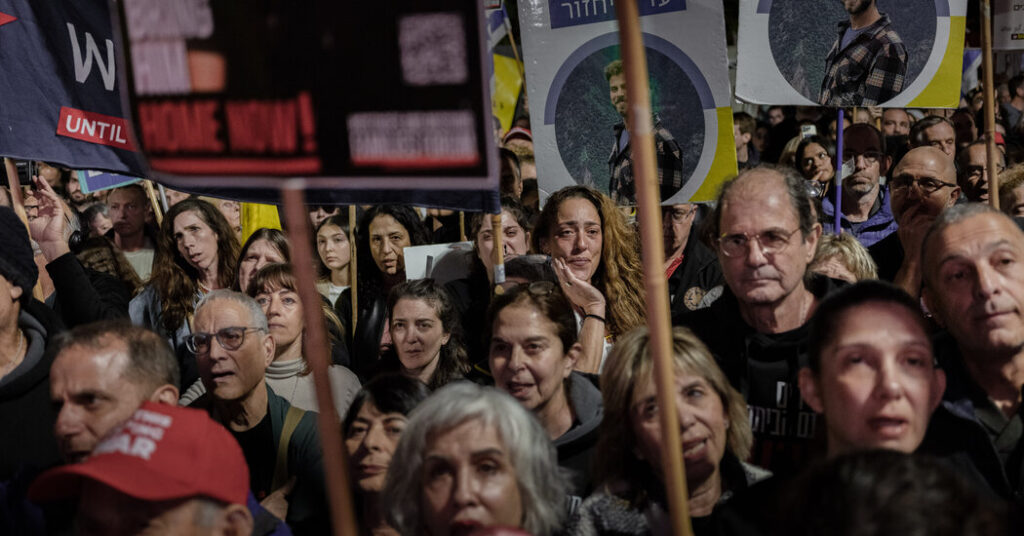Khalil al-Hayya, Hamas’s chief negotiator, said in a speech on Tuesday that militants intend to hand over the remains of four Israeli hostages to Israel on Thursday in exchange for the release of Palestinian prisoners.
Mr. Hayya said that members of the Bibas family — some of the most well-known hostages worldwide — would be among the four bodies handed over to Israel on Thursday, without saying how many. The three remaining members of the Bibas family in Gaza are Shiri Bibas and her two children.
The Israeli prime minister’s office confirmed that the bodies of four Israelis would be returned on Thursday, but officials didn’t respond to requests for comment about whether the Bibas family would be among them. The Israeli military had said until recently that there were grave concerns for the lives of Ms. Bibas and her children, though it had not confirmed their deaths.
For many Israelis, the story of the Bibas family has become a symbol of the brutality of the Hamas-led Oct. 7 attack: Shiri Bibas was corralled by gunmen and taken to Gaza with her two red-haired children, Ariel, 4, and the baby Kfir, who was just short of 9 months old at the time. Yarden Bibas, Shiri’s husband and the children’s father, was also abducted, bleeding heavily after an assailant struck his head with a hammer, relatives said. Mr. Bibas was released from captivity earlier in February.
In a statement, the Bibas family said it had not received official confirmation about the fate of Shiri and her children.
Mr. Hayya and the Israeli prime minister’s office also said the number of living hostages scheduled to be released on Saturday would be increased to six from three.
Mr. Hayya said Avera Mengistu and Hisham al-Sayed, Israeli citizens who have been held in Gaza for roughly a decade, would be among the six. It was not immediately clear why Hamas had decided to increase the number of living hostages to be released on Saturday. The original agreement had called for Hamas to release three hostages on Saturday in exchange for Palestinian prisoners.
But Mahmoud Mardawi, a Hamas official, said in a text message that Hamas had received assurances from mediators that Israel would allow for the entry of temporary housing units and heavy machinery into Gaza before Saturday. Israeli officials didn’t immediately respond to a request for comment about Mr. Mardawi’s message.
As of Tuesday afternoon, Israel had yet to permit temporary homes or heavy machinery to cross into Gaza. At least 60,000 prefabricated housing units should be delivered to Gaza during the first phase of the deal, in addition to equipment for rubble clearance, according to a copy of the agreement’s text seen by The New York Times.
Hamas has said that the homes would provide shelter for Palestinians whose homes were destroyed and that the machinery would help make it possible to retrieve bodies from the rubble.
The release of the living and dead hostages this week would indicate that the implementation of the initial, six-week cease-fire agreement between Israel and Hamas was progressing despite concerns about its fragility. Negotiations over the second phase of the deal, which calls for a permanent end to the fighting, a full Israeli withdrawal from Gaza and the release of more hostages and prisoners, appear less solid.
The two sides were to start talks over details on the next phase two weeks ago, but Qatar, a key mediating country, said the talks had yet to begin.
Hamas has accused Israel of delaying the start of the phase two discussions, while Israel still hasn’t announced publicly when it would send officials to participate in them.
As part of the first phase of the deal, Hamas is supposed to release 33 Israeli hostages, including eight who the Israeli authorities believe are dead. As of Tuesday, Hamas had freed 19 Israelis.


